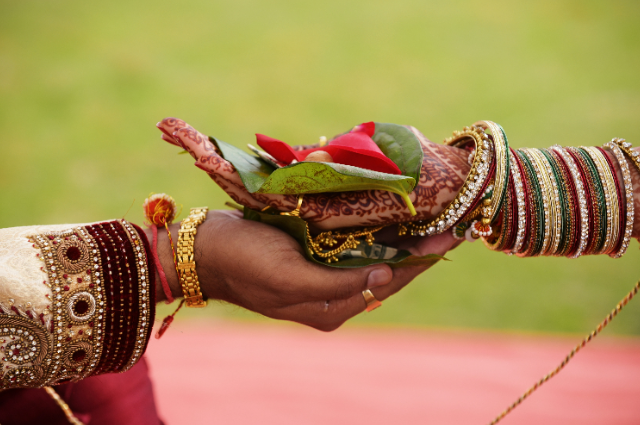
Photo by AMISH THAKKAR on Unsplash
Women in Hindu society have traditionally had few rights to ancestral land ownership. Unlike their male counterparts, they have not enjoyed the same rights to inherited ancestral land since ancient times, mostly because of the traditional notion of Stridhan within Indian culture. This practice has impacted the rights that women have in inherited land. The Hindu Succession Amendment Act, of 2005 introduced a new principle of equality whereby women and men can inherit equally especially when land is concerned. It declares that sexual discrimination in Hindu inheritance laws is abolished.
According to section 6 of the Hindu Succession (Amendment) Act (2005), daughters have the right to equal shares in ancestral properties alongside their male siblings. This illustrates that a woman is never seen as an independent individual; she is always reliant on a man and does not need property ownership. As shown through the data available from National Family Health Survey-5 (NFHS-5), property ownership prevails much more among the population of men than females, although women are barred neither to inheriting movable property nor inheriting immovable from either of their ancestral families nor their marital family. Still, this inheritance is significantly in minuscule proportion lesser by males.
What does Stridhan mean, and why is it significant in Indian culture?
Stridhan is derived from the Sanskrit two words: Stri refers to woman, and Dhan refers to wealth or property and hence means a woman's property or fortune. It can be spelt as Stridhana, Stridhanam, Streedhana, or Istridhan among others. This concept mainly includes dowries presented to a woman at the time of marriage and may encompass clothing, jewels, ornaments, household items, cattle, and even land in some contexts. Both movable and immovable properties fall under Stridhan. The concept of Stridhan has existed in Indian society since ancient times.
The ancient legal text known as Manusmriti was the first to introduce the term Stridhan to refer to types of property that women could solely own. Other historical texts, including Smritis and Puranas, address Stridhan; however, none explicitly delineate women’s inheritance rights. A woman typically did not hold complete ownership of her Stridhan, as Manusmriti states that a wife, along with her property, is considered to belong to her husband.
How does Stridhan influence women's rights to inherit the land?
According to a report by the Asian Development Bank from 2018, there are two primary reasons for the starkly disproportionate allocation of land to women in India: one is the personal religious laws that regulate land ownership, which falls under state authority and are not governed by a uniform constitutional law, leading to discriminatory inheritance rights for women. The second reason is the cultural norms prevalent in India's patriarchal society, which does not allow women to have land ownership. In the Hindu context, prevalent cultural beliefs encompass the concept of stridhan, which indicates that women have rights only to family gifts such as gold jewellery and clothes but not to land, unlike their brothers.
Daughters in Indian culture are regarded as "Paraya Dhan," meaning they are perceived as someone else's property or wealth, that of the husband and in-laws. Such deeply entrenched beliefs in culture and strong influences from Stridhan are significantly related to women's inheritance rights over land. Consequently, parents frequently do not consider it necessary to pass on property rights to their daughters through inheritance. The prevailing societal norms in Hinduism suggest that any Stridhan was already given to the daughter negates her claim to inheritance.
What leads women to shy away from asserting their rights to inherited property?

Image by Gerd Altmann from Pixabay
The Hindu Succession (Amendment) Act (2005) was introduced to enhance women’s rights to equal shares in ancestral property, including land. This legislative change established equal rights for daughters and sons. However, the cultural and social biases against women have hindered the realization of these equal land rights for women. The most significant change introduced by the Hindu Succession Act was the amendment of Section 6, whereby daughters were given equal birth rights as sons. Children of a deceased daughter enjoyed equal rights as children of a deceased son. This created parity between male and female lines of succession. However, one can ask the question of why women often don't claim their rights over inherited land.
There are various cultural and traditional reasons behind this. However, a strong argument is the systematic discrimination these daughters face right from a very young age. Being perceived as inferior because of their gender, this patriarchal value in their families and society also perpetuates the notion that women, being weak, are unable to handle properties such as land or homes on their own. Such discrimination creates their socio-economic marginalization, which further weakens their capacity to claim their rights on ancestral land or property. Many traditional and cultural practices also restrict women's claims, such as the sibling bond between brothers and sisters, which is strongly promoted by celebrations like Rakshabandhan and Bhaidooj. Women tend to impose themselves upon accepting Stridhan, which is practiced beyond marriage too in the form of gifts during special occasions. All these cultural restrictions prevent women from claiming their inheritance rights though they know their legal rights at the same time.
As the World Bank pointed out in a 2012 report, while economic opportunities for women in developing nations are slowly improving, inheritance laws remain deeply skewed against women in many cultures. When the division of inherited wealth is significantly uneven, understanding the implications of this inequality on economic disparity becomes crucial. Parental transfers of material wealth and investments in human capital are key forms of intergenerational transfers that have profound effects on long-term development.
How can women gain empowerment and achieve independence?
In India, inheriting land serves as the main method for acquiring property. Equal rights to land for women are also a critical objective of Goal 5 regarding gender equality within the United Nations Sustainable Development Goals (SDGs). Through this equality, societal changes occur, enabling women to become financially self-sufficient without relying on male relatives, thus allowing them to make their own choices and participate equally in all areas.
The United Nations Sustainable Development Goals state, “Gender equality is not only a basic human right but also a necessary basis for a peaceful, prosperous, and sustainable world.” This legislative reform from 2005 represents one avenue toward achieving equal rights for daughters regarding their father's entire estate; such rights may enhance their security and self-esteem. This development may reduce violence against women, such as domestic abuse, sexual exploitation, and inequality. Women in India often face multiple forms of violence from their spouses and family members, due to their financial dependence on husbands or the inability to bring home a good dowry. The rising number of dowry-related crimes in the nation emphasizes the crucial need for equal property rights for women.
Conclusion
Owning land and property will not only boost their confidence in generating income, but it will also serve as a key factor in granting them significant input in household decision-making, both in domestic and financial matters. The lack of these rights often leads to a lower status for women within both family and social contexts. The 2005 legislative reform is a solution to numerous challenges faced by women. Contemporary society should embrace this reform for the good of their daughters. It will ultimately guarantee a brighter future for both women and the nation as a whole.
